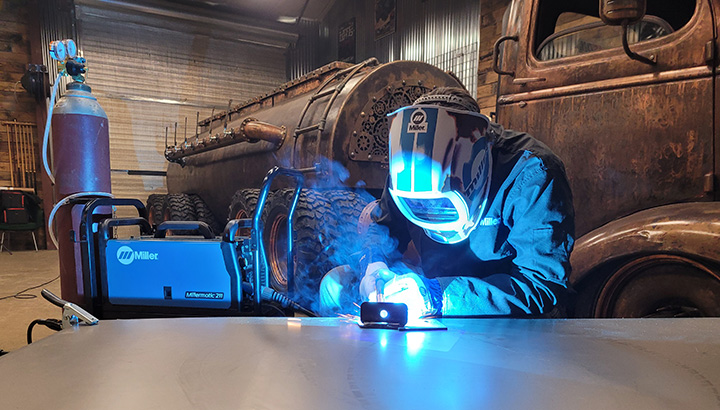In the world of welding, MIG welding (Metal Inert Gas welding) is a popular choice due to its versatility and ease of use. One common question that often arises is, "Why does MIG welding need gas?" In this article, we'll delve into the details of why shielding gas is an essential component of the MIG welding process.
The Importance of Shielding Gas in MIG Welding
Key Components of MIG Welding
Before we discuss the necessity of shielding gas, let's first understand the key components of MIG welding:
- Power Source: MIG welding requires a power source to generate the necessary electrical current for welding.
- Wire Electrode: A consumable wire electrode is fed through the welding gun, where it is melted to create the weld bead.
- Welding Gun: The welding gun is the tool used to direct the heat and wire to the workpiece.
- Shielding Gas: This is where the question, "Why does MIG welding need gas?" comes into play. Shielding gas is crucial because it serves two primary purposes: protecting the weld pool and improving the welding process.
Protection of the Weld Pool
One of the main reasons for using shielding gas in MIG welding is to protect the weld pool from the surrounding atmosphere. When metals are exposed to oxygen and other atmospheric elements at high temperatures, they can become contaminated, leading to issues such as porosity and weld defects.
Oxygen Content Reduction
Shielding gas, often a mixture of argon and carbon dioxide, creates an inert environment around the weld pool. This inert atmosphere displaces the oxygen and prevents it from coming into contact with the molten metal. As a result, the oxygen content is reduced, ensuring a clean and strong weld.
Improved Welding Process
Apart from protecting the weld pool, shielding gas also plays a critical role in enhancing the efficiency and quality of the welding process. Here are some specific advantages:
Enhanced Efficiency
- Cost-Efficiency: Shielding gas minimizes the need for post-weld cleaning and rework, saving both time and money.
- Speed: MIG welding with shielding gas allows for faster travel speeds, increasing productivity.
Superior Weld Quality
- Material Compatibility: Different shielding gases are tailored to specific materials, ensuring optimal weld quality and reducing the risk of defects.
- Improved Weld Appearance: Using gas results in cleaner, spatter-free welds with a more aesthetically pleasing finish.
Longer Lifespan of Equipment
- Extended Equipment Life: Welding equipment tends to last longer when used with shielding gas due to reduced wear and tear.

Cost Considerations
While the benefits of using shielding gas in MIG welding are clear, there are cost considerations to keep in mind. The price of shielding gas and related equipment, such as gas cylinders and regulators, can impact the overall welding budget. However, these costs are often outweighed by the increased efficiency, improved weld quality, and reduced post-welding work.
Conclusion
In summary, the question, "Why does MIG welding need gas?" has a comprehensive answer. Shielding gas is essential for protecting the weld pool from atmospheric contamination, improving the efficiency and quality of the welding process, and extending the lifespan of equipment. While there are costs associated with using shielding gas, the overall benefits make it a crucial component of successful MIG welding.
If you want to learn more about MIG welding and the importance of shielding gas, you can visit this link for additional information.
By understanding the significance of shielding gas in MIG welding, welders can make informed decisions about their welding processes and achieve optimal results.